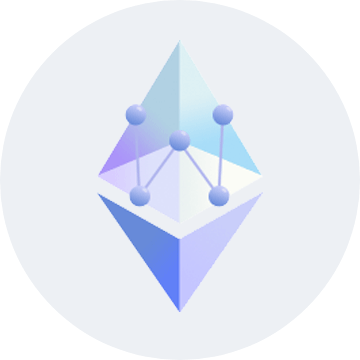Asic Miner profitability
Apexto Mining tracks the ASICs market. See the top ASICs today, including their hash rates and profitability based on electricity costs. Enter your electricity rate to find the most profitable ASICs for you.
The data relates to 2025 and is updated every 10 minutes.
- Day
- Week
- Month
- Year
|
Miner Model
|
Coin
|
Hashrate
|
Power
|
Efficiency
|
Miner Price
|
Earning 24H
|
Electricity cost
|
Daily net profit
|
Payback
|
Calculator
|
|---|
 |
2Gh/s
|
3400W
|
1,700.00
W/GH
|
$
5930
|
$
55.91
|
$
4.08
|
$ 51.83
|
115 days
|
||
   |
1160Th/s
|
11020W
|
9.50
W/TH
|
$
8400
|
$
54.93
|
$
13.22
|
$ 41.70
|
202 days
|
||
 |
840ksol/s
|
2560W
|
3.05
W/KH
|
$
2300
|
$
37.53
|
$
3.07
|
$ 34.46
|
67 days
|
||
   |
860Th/s
|
11180W
|
13.00
W/TH
|
$
17114
|
$
40.72
|
$
13.42
|
$ 27.31
|
627 days
|
||
   |
819Th/s
|
12000W
|
14.65
W/TH
|
$
4490
|
$
38.78
|
$
14.40
|
$ 24.38
|
185 days
|
||
   |
660Th/s
|
8250W
|
12.50
W/TH
|
$
7925
|
$
31.25
|
$
9.90
|
$ 21.35
|
372 days
|
||
  |
580Th/s
|
5510W
|
9.50
W/TH
|
$
11980
|
$
27.46
|
$
6.61
|
$ 20.85
|
575 days
|
||
 |
720Mh/s
|
1300W
|
1.81
W/MH
|
$
1600
|
$
20.13
|
$
1.56
|
$ 18.57
|
87 days
|
||
   |
600Th/s
|
8700W
|
14.50
W/TH
|
$
6000
|
$
28.41
|
$
10.44
|
$ 17.97
|
334 days
|
||
  |
500Th/s
|
5500W
|
11.00
W/TH
|
$
9650
|
$
23.68
|
$
6.60
|
$ 17.08
|
565 days
|
||
 |
420ksol/s
|
1510W
|
3.60
W/KH
|
$
1330
|
$
18.77
|
$
1.81
|
$ 16.95
|
79 days
|
||
   |
473Th/s
|
5670W
|
11.99
W/TH
|
$
3000
|
$
22.40
|
$
6.80
|
$ 15.59
|
193 days
|
||
   |
500Th/s
|
6750W
|
13.50
W/TH
|
$
7250
|
$
23.68
|
$
8.10
|
$ 15.58
|
466 days
|
||
   |
500Th/s
|
7450W
|
14.90
W/TH
|
$
4299
|
$
23.68
|
$
8.94
|
$ 14.74
|
292 days
|
||
   |
442Th/s
|
5304W
|
12.00
W/TH
|
$
7900
|
$
20.93
|
$
6.36
|
$ 14.56
|
543 days
|
||
   |
558Th/s
|
10602W
|
19.00
W/TH
|
$
5580
|
$
26.42
|
$
12.72
|
$ 13.70
|
408 days
|
||
   |
430Th/s
|
5590W
|
13.00
W/TH
|
$
11100
|
$
20.36
|
$
6.71
|
$ 13.65
|
814 days
|
||
  |
23.4Gh/s
|
2340W
|
100.00
W/GH
|
$
5599
|
$
16.17
|
$
2.81
|
$ 13.36
|
420 days
|
||
  |
23.4Gh/s
|
2340W
|
100.00
W/GH
|
$
11200
|
$
16.17
|
$
2.81
|
$ 13.36
|
839 days
|
||
   |
480TH/s
|
8064W
|
16.80
W/TH
|
$
5250
|
$
22.73
|
$
9.68
|
$ 13.05
|
403 days
|
To gauge your cryptocurrency mining profitability, mining calculators are indispensable tools. They simplify the process, offering precise estimates based on a range of factors. By incorporating variables like your miner’s hashrate, coin difficulty, power source, and electricity costs, these calculators produce results that reflect your expected earnings. You’ll receive a breakdown showing the number of coins mined and electricity expenses over different periods. Though easy to use, these calculators provide reliable information relevant to the moment of calculation, helping you understand the financial impact of your mining operations.
Calculators for mining
Cryptocurrency mining demands careful planning and precise calculation of potential earnings. With so much money at stake, you can't afford to overlook any details. Factors like coin prices, network difficulty, block rewards, and electricity costs are constantly in flux, directly affecting your profits. These shifts can have a significant impact, so understanding what drives your income is crucial. By breaking down these elements, you'll see how mining calculators can help you stay ahead, manage changes, and optimize your investment effectively.
Key Factors
1. HashrateHashrate essentially measures the speed at which your miners operate. The faster the hashrate, the greater the number of solutions your miner can attempt per second, increasing your chances of solving blocks in the mining process. Mining involves creating blocks by solving complex calculations, and a higher hashrate boosts your likelihood of success. Measured in hashes per second (h/s), hashrate can be expressed in kilohashes (KH/s), megahashes (MH/s), terahashes (TH/s), and more. Different miners offer varying hashrates; for instance, ASICs typically have higher hashrates compared to GPUs due to their superior power. Mining calculators allow you to input and adjust these measurements to better understand your mining performance.
2. Energy consumptionCreating a new block through complex calculations demands significant electricity, especially for mining rigs that operate 24/7. This constant power usage, typically measured in watts, is a critical factor in determining your mining profits. Power consumption directly impacts your earnings and is closely tied to the cost of electricity—a crucial component in the overall profitability of your mining operations.
3. Cost of electricityElectricity costs can significantly impact your mining expenses, often becoming one of the largest expenditures. In regions like Iceland and China, mining tends to be more affordable thanks to renewable energy sources like wind and hydroelectric power. These areas benefit from lower energy costs, which can make mining more profitable. When using calculators, you typically input the electricity cost in dollars, with power consumption measured in kilowatt-hours (kWh).
4. Price of the coinThe profitability of your mining operation is heavily influenced by the price of the coin you're mining. Cryptocurrency prices are highly volatile and can change in seconds, directly affecting your earnings. When coin prices rise, your income increases, making mining more lucrative. Most calculators require you to enter the price in USD, though some automatically fetch the current rate. The coin's price is a key factor in deciding whether it's worth mining; if the price drops consistently, it might be time to switch to a more profitable coin.
5. ComplexityNetwork difficulty reflects how challenging it is to discover a new block or find a hash below a certain threshold. This difficulty level isn't fixed; it fluctuates and is regularly adjusted to maintain a consistent block discovery rate. The rise of ASIC miners, which can rapidly compute a vast number of hashes, has led to these adjustments, ensuring that blocks continue to be mined at a balanced pace despite the increased computing power.
6. Block rewardMiners earn block rewards after successfully solving a block, serving as an incentive and recorded as the first transaction in the block. To help stabilize the coin's value, these rewards are halved periodically. For instance, Bitcoin’s reward is now 6.25 BTC and halves every 4 years. When mining in a pool, the reward is shared among all contributing miners, and a portion may be deducted to cover pool fees.
7. Pool participation feeJoining a large mining pool is often the better choice, as it increases your chances of earning rewards. While solo mining can be lucrative, competing against the combined power of multiple pools can make it take years to solve a block on your own. However, keep in mind that some pools charge fees, usually a small percentage of your reward. These fees, though minimal, are important to consider as they can affect your overall earnings. Not all pools charge fees, and those that do often use them to support the pool's development and community. Including these fees in your calculations ensures a more accurate tracking of your profits.
Other
Certain mining calculators include extra variables, such as equipment costs or additional expenses like ventilation. However, many calculators are designed to be user-friendly and incorporate all the key components. This means you only need to input the details relevant to your specific situation.
As mentioned, the variables involved in mining are constantly changing. This is why we emphasize the importance of constantly performing and re-performing calculations even while mining, as you never know when it might be unprofitable for you. So make sure you always check this and always keep yourself updated with the latest information about the currencies you are working with.
Profitability
Now that you understand the basics of mining calculations, it's crucial to focus on the factors that will most significantly affect your profitability. Your mining hardware is a major consideration, as it represents a substantial initial investment. The choice of hardware depends on the type of coins you plan to mine. Graphics cards are versatile and can mine various coins, and they are relatively affordable. You can set them up in a standard PC case or use pallets for better cooling. However, for coins that require ASICs, GPUs are often insufficient due to the specialized nature of ASICs.
ASICs are specifically engineered for cryptocurrency mining, making them much more efficient and powerful than GPUs. But they come with a high price tag, especially if you need multiple units to set up a mining rig. Therefore, using a mining calculator is essential to estimate how long it will take to recover your investment. Installation costs can run into thousands, and it might take years to break even. Once you cover these costs, however, any earnings beyond that point contribute to your profit.
Coin Price and Block Reward
As previously noted, block rewards for cryptocurrencies are halved periodically to stabilize their prices and prevent them from dropping. Most cryptocurrencies have a capped supply, and their prices tend to rise exponentially due to this limited availability. Increased ownership boosts demand, while mass selling can drive prices down. The cryptocurrency market is highly dynamic, so regularly checking your profitability with a mining calculator is essential.
Mining calculators are invaluable tools for navigating the complexities of mining. Understanding how these calculators function, their importance, and the factors that influence profitability will help you make informed decisions. Choose a calculator with up-to-date data for accurate results and use it consistently to monitor and optimize your mining operations.
Frequently asked questions
How to calculate the profitability of production?
Input your equipment details and expense data into the designated fields, and let the calculator handle the calculations for you.
What parameters do calculators use?
Our calculators, like many others, factor in key elements such as hashrate, network difficulty, electricity consumption, and the coin's price in USD. For cloud mining calculations, you only need to input the hashrate and the coin's price in USD.
What do KH/s, MH/s, GH/s, TH/s mean?
They display the hash rate, measured in hashes per second, including units like Kilohash, Megahash, Gigahash, and Terahash per second. Essentially, these metrics indicate how many hashes your miner can process each second.

 Solo Miner
Solo Miner
 Bitcoin
Bitcoin
 Dogecoin
Dogecoin
 Aleo
Aleo
 Kaspa
Kaspa
 ALPH
ALPH
 Nexa
Nexa
 ETC
ETC
 CKB
CKB
 Dash
Dash
 Kadena
Kadena


































 ALPH
ALPH CKB
CKB DASH
DASH

 DOGE + LTC + BEL
DOGE + LTC + BEL  HNS
HNS KAS
KAS KDA
KDA NEXA
NEXA RXD
RXD SC
SC SCP
SCP XMR
XMR XTM
XTM









